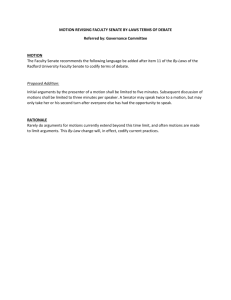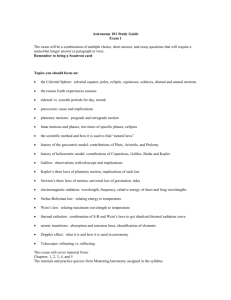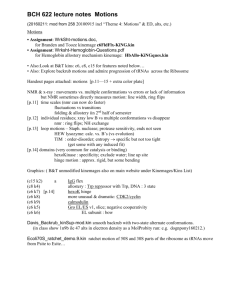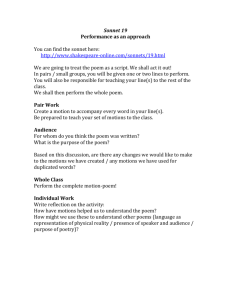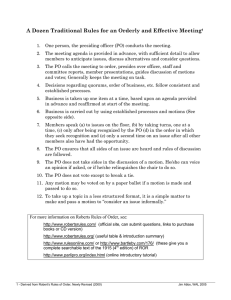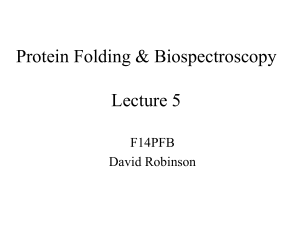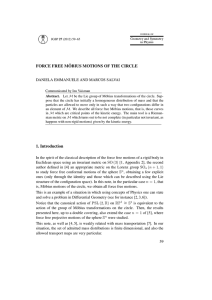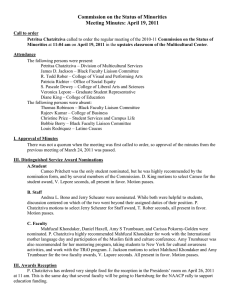Using Motion Planning to Study Molecular Motions ABSTRACT:
advertisement
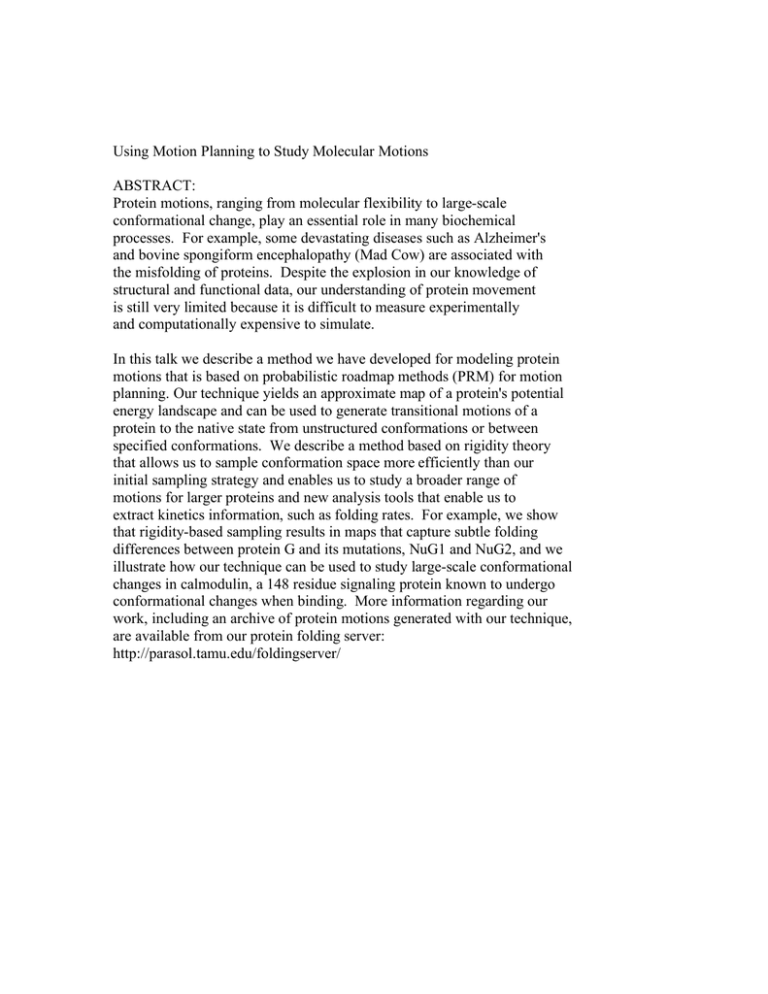
Using Motion Planning to Study Molecular Motions ABSTRACT: Protein motions, ranging from molecular flexibility to large-scale conformational change, play an essential role in many biochemical processes. For example, some devastating diseases such as Alzheimer's and bovine spongiform encephalopathy (Mad Cow) are associated with the misfolding of proteins. Despite the explosion in our knowledge of structural and functional data, our understanding of protein movement is still very limited because it is difficult to measure experimentally and computationally expensive to simulate. In this talk we describe a method we have developed for modeling protein motions that is based on probabilistic roadmap methods (PRM) for motion planning. Our technique yields an approximate map of a protein's potential energy landscape and can be used to generate transitional motions of a protein to the native state from unstructured conformations or between specified conformations. We describe a method based on rigidity theory that allows us to sample conformation space more efficiently than our initial sampling strategy and enables us to study a broader range of motions for larger proteins and new analysis tools that enable us to extract kinetics information, such as folding rates. For example, we show that rigidity-based sampling results in maps that capture subtle folding differences between protein G and its mutations, NuG1 and NuG2, and we illustrate how our technique can be used to study large-scale conformational changes in calmodulin, a 148 residue signaling protein known to undergo conformational changes when binding. More information regarding our work, including an archive of protein motions generated with our technique, are available from our protein folding server: http://parasol.tamu.edu/foldingserver/



